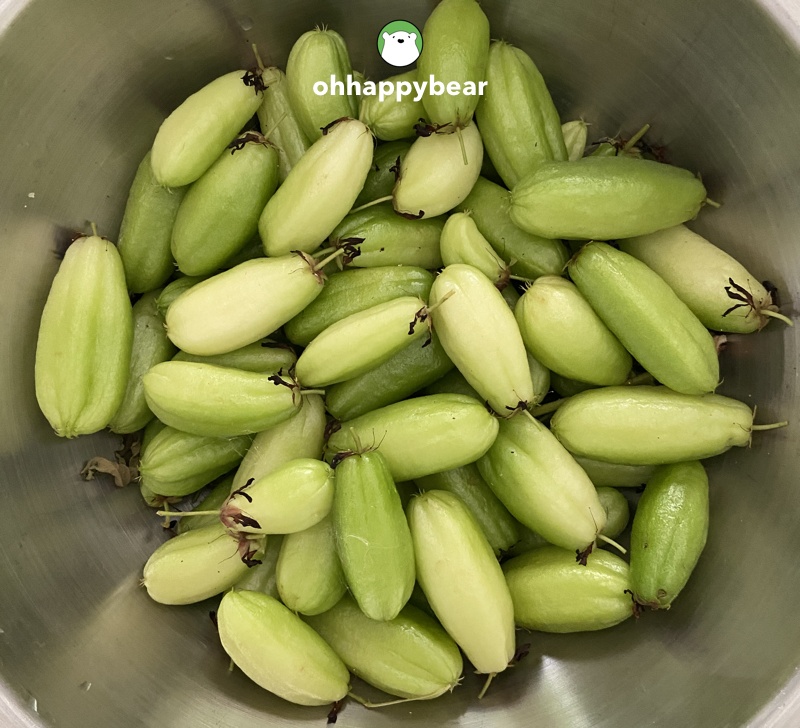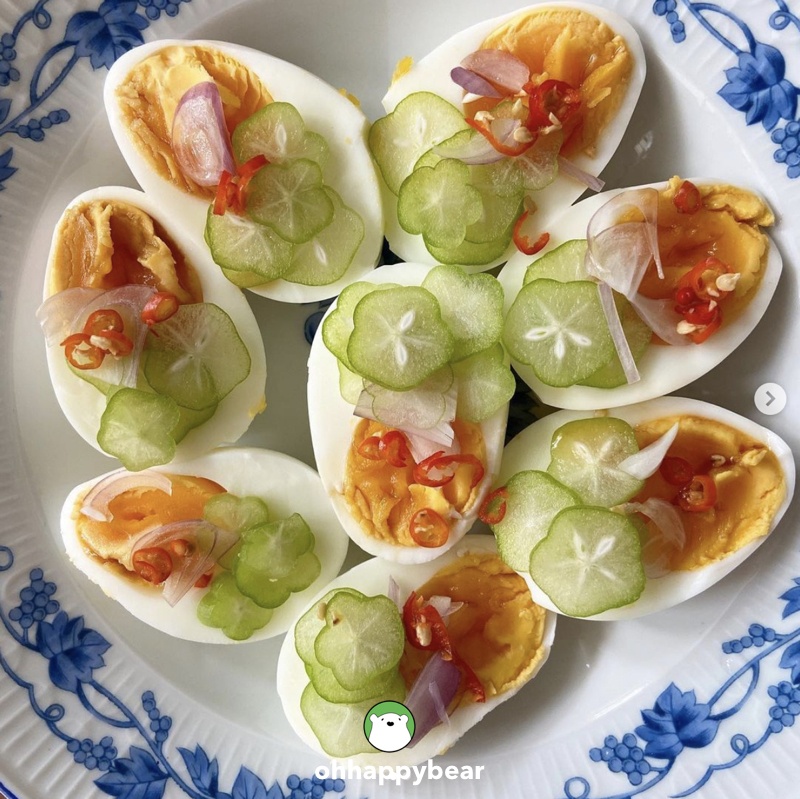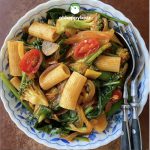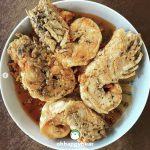If there’s one type of Thai dishes I dread the most, it is yum (ยำ), the Thai salads that include everything from the mood-lifting Som Tam to all things spicy, tangy, and oh-so-delicious. Usually comprising three major bold flavours of spicy, sour, and salty, these salads are tricky to make because it’s just not easy, at least to me, to balance well those bold tastes and still make the dish just right and delicious. To me, a good yum should be spicy first, salty second, closely followed by the sharp sourness and then everything must be a bit tamed by a small dosage of sweetness.
A wise woman once told me though, that I could simply begin by using the 1:1:1 ratio.
A wise woman once told me though, that I could simply begin by using the 1:1:1 ratio. That means one ratio of the spicy, the sourness, and the saltiness. That’s a well-balanced recipe, but then again, sometimes over-balancing things are not what I want. Everyone has a preferred taste, and mine is definitely not always a well-balanced and straight line, especially when it comes to my yum.
So here is what I found out on my crusade for perfecting my yum. I begin with that basic ratio, and then add whatever taste I want as I go. I usually don’t like my savouries sweet, so sweet is the last thing I’ll add, little by little, in the case when those three bold flavours can’t find peace with one another. After a while of honing my skill, I am feeling more comfortable with this dish. And I now made them so often. They are no longer my kryptonite although one yum differs from another. There are certain ways I manage to make them enjoyable.
The RECIPE – BASIC Components in Thai YumS
Yum is Thai salad. Something fresh, blanched or cooked thrown together with a spicy dressing. There are chillies, of course, in fresh or dry form for the spiciness. Then, there’s fish sauce, or soy sauce, or anything that gives the dish the saltiness. The sourness can be from lime juice, kaffir lime juice, som sa, tamarind pulp, pineapple, or whatever sour fruits you have in the kitchen.
Make sure to add the crunchy ingredients towards the end when you have adjusted the tastes to prevent the salad from getting soggy too fast when served.
Other crucial elements also include: chopped or sliced shallots, or onion, red and white all do; garlic (used in certain recipes, but the shallots are more common). Sometimes, we also add extra nutty crunches via toasted peanuts, cashew nuts, crispy fish skin, pork cracklings, and so on, this depends on the type of salad you make. Make sure to add the crunchy ingredients towards the end when you have adjusted the tastes to prevent the salad from getting soggy too fast when served.
 Above: We’ve got a bilimbi abundant in May, hence those pretty Yum Kai Tom or boiled eggs salad that made the cover picture of this blog post. 😀
Above: We’ve got a bilimbi abundant in May, hence those pretty Yum Kai Tom or boiled eggs salad that made the cover picture of this blog post. 😀
My Pretty 7-minute Eggs SALAD or Yum Kai Tom
This is a very simple recipe that will immensely luxe up your simple hearty boiled eggs. And it is so light and refreshing, too. In the cover picture, I boiled my eggs for 7 minutes. I used the off-the-fridge eggs and gently lowered them into a simmering water. I also gently stir my eggs around the pot well during the first minute to centre the yolks. Sometimes it works, sometimes it doesn’t. But I’d do it. Then, I cover the lid, keep the water simmering, and set my timer for 6 minutes. This method works magically for me.
It’s early May and our Taling Pling tree (or bilimbi) was laden with fruits thanks to my all-natural fertiliser of rice washes. Usually, people would replace their lime with bilimbi in shrimp paste chilli paste when the fruit is in season, but I have done that so many times, hence using them to pretty up and also add the sourness to the boiled eggs. Delicious.
RECIPE – My Hand-Mixed Rice SALAD with Thai Mackerel (Pla Tu)
Thai mackerel or Pla Tu is a staple. Decades ago when the gulf was still abundant, the fish used to be so cheap that people equated Pla Tu to poor man’s food. The oily and aromatic fish is also a cat’s favourite. My mom used to feed me this hand-mixed rice out of leftover pla tu. The dish is so simple and delicious, I remember I ate the whole big bowl of the rice and ask for many many refills.
Now, as we all well know, things aren’t looking so great in terms of the environment. Pla Tu has become more and more expensive. Thai mackerels are usually the small ones, not the large ones you’d find at the expensive market (which I frequent). They are also seasonal, too, with the harvesting season towards the end of the year. Somehow, though, we manage to have Pla Tu all year long, it is a staple fish when it comes to Nam Prik Pla Tu or the chilli paste made with shrimp paste and served with fried Thai mackerel.
I use my usual brown rice in this case, hence the dark tone. I also bought the already-fried mackerels to make things easier. First, I cook the rice, and when it’s ready, I fluff it and unplug my cooker. This will cool down the rice to the point that I can hand mix it. But then, I want my rice to be still nice and warm.
I then break my mackerels, pick off all the bones. Pla Tu has thin, tiny bones everywhere, so take your time. This is a great dish to meditate on for sure. I leave some big pieces whole for garnish. When the rice is cool enough to handle, I go in with my hands, gently rubbing the rice while also shredding the fish. When everything is almost mixed through, I add some soy sauce and fluff up the rice again to mix the sauce through. And that’s it. I serve it with shallot, chillies, and some young ginger. A wedge of lime brightens everything up nicely.
Yum or the Thai salads are best served fresh. You want to time your serving right. They are not good sitting out for too long. Another challenge apart from being hard to nail down in the first place.
© OHHAPPYBEAR


